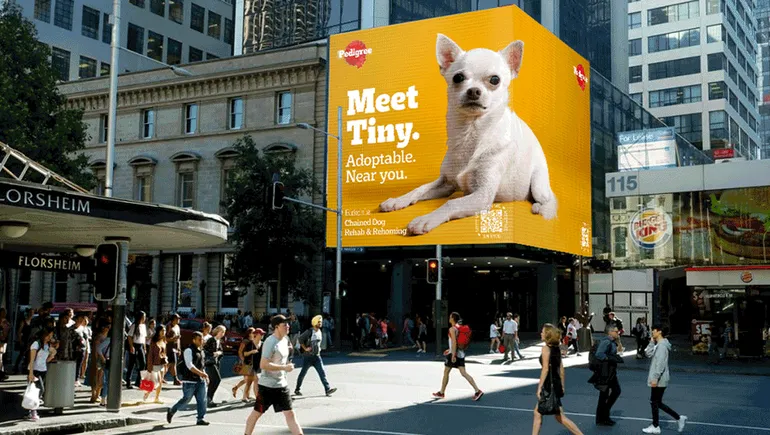
What marketers need to know from Mary Meeker’s 2019 Internet Trends report
Dive Brief:
- There are 3.8 billion internet users globally, marking the first time that more than half of the world’s population is online, according to Mary Meeker’s 2019 Internet Trends report, which was first shared at Recode’s Code Conference on Tuesday. That figure, representing 6% year-over-year (YOY) growth, is solid but slowing, the 333-slide presentation by the Bond Capital general partner said, indicating broader disruptions hitting the online ecosystem.
- Internet advertising is seeing “solid” growth and a “healthy” pace for innovation, but the report cautions that, in some areas, customer acquisition costs (CACs) might be “rising to unsustainable levels.” CACs are rising especially sharply in highly competitive sectors like mobile finance apps. Gains made in programmatic display advertising versus direct buying models continued to have a negative impact on pricing, Meeker’s report found. Two other bellwethers of digital health, global smartphone shipments and e-commerce growth rates, saw -4% YOY growth and 0% YOY growth, respectively — though physical retail sales growth still pales in comparison to online.
- The influx of data privacy oversights, from laws like the GDPR to Apple’s iOS enforcing stricter rules, are impacting ad targeting and affecting growth. Quarterly internet advertising revenue among the leading platforms in the U.S. has decelerated. Meanwhile, smaller digital advertising players are gaining market share: Amazon, Twitter, Snap and Pinterest collectively experienced more than 2.6 times growth in U.S.-based revenue since Q1 2017.
Dive Insight:
Meeker’s closely-watched annual trends report this year underpins some tectonic shifts hitting the digital advertising economy as growth begins to slow or decelerate in key areas and heavyweight platforms, like Google and Facebook, see their dominance tested amid an influx of competitors and new regulatory hurdles. The report captures just how fast private, encrypted messaging is gaining traction as a response to data privacy scrutiny. Eighty-seven percent of global web traffic was encrypted in Q1 2019 versus 53% three years ago, as noted in Fast Company. Significantly, Facebook in March announced it would pivot its app network of Facebook, WhatsApp and Instagram in this direction.
Despite headwinds in the privacy sector, context-rich data sources are at the same time proving useful and informative to both businesses and consumers, helping to drive change. Digital innovation continues to benefit a number of channels, including digital video, voice technology from assistants like Amazon Alexa and the wearables market, which has seen double the number of users in the past four years, per CNBC.
Tying many of those channels together is a theme of mobile-based consumption, the latter of which is steadily rising regardless of the slowdown in the global smartphone market. Mobile commanded 33% of U.S. consumers’ time and 33% of marketers’ ad spend in 2018, just short of TV (34% time spent, 34% of ad spend) but far above desktop (18% time spent, 18% ad spend). Mobile devices for the first time surpassed TV for time spent among U.S. consumers this year, per estimates reported in Ad Age. That marks a dramatic shift from 2010, when mobile media received just 8% of consumers’ time and 0.5% of ad spending. On the platform front, Instagram and YouTube continued to draw a high amount of eyeballs, reflecting a spiking preference for visually focused media.
Meeker called out marketing innovations that leverage bleeding edge technology like artificial intelligence to better personalize user experiences, many of them centered on mobile and visual media. The slides reference Facebook’s audience customization tools, YouTube’s machine learning-powered editing software, like the automated “Bumper Machine” the platform rolled out in May, and in-app shoppable options introduced to social sites like Pinterest and Instagram.
But the report also highlights some emerging disruptors that could demarcate where digital businesses are heading across the board. “Fortnite” was suggested by Meeker as a standout example of both the increasingly popular “freemium” model and also a potentially significant new social network. The online video game, developed by the studio Epic Games, commands more than 250 million players, who are predominantly young and in the Gen Z age range. These players square off in teams of 16 for matches featuring up to 100 players, where they work together toward a collective goal.
The socially driven aspect of “Fortnite” has resulted in events like an in-game live concert by the electronic music producer Marshmello, which attracted more than 11 million players. While “Fortnite” is free to download, users can pay to buy their characters new outfits and gear — a feature that has proven incredibly lucrative for Epic and attracted partnerships from major brands like Nike and the NFL.
Beyond acting as a window to reach otherwise elusive demographics, freemium media like “Fortnite” enables higher usage, engagement and social sharing, Meeker said. The trend toward freemium services is reflected at both the enterprise level, through companies like Dropbox, Slack and Wix, and in consumer-facing platforms like Spotify, Twitch and Amazon Prime, per the presentation.





